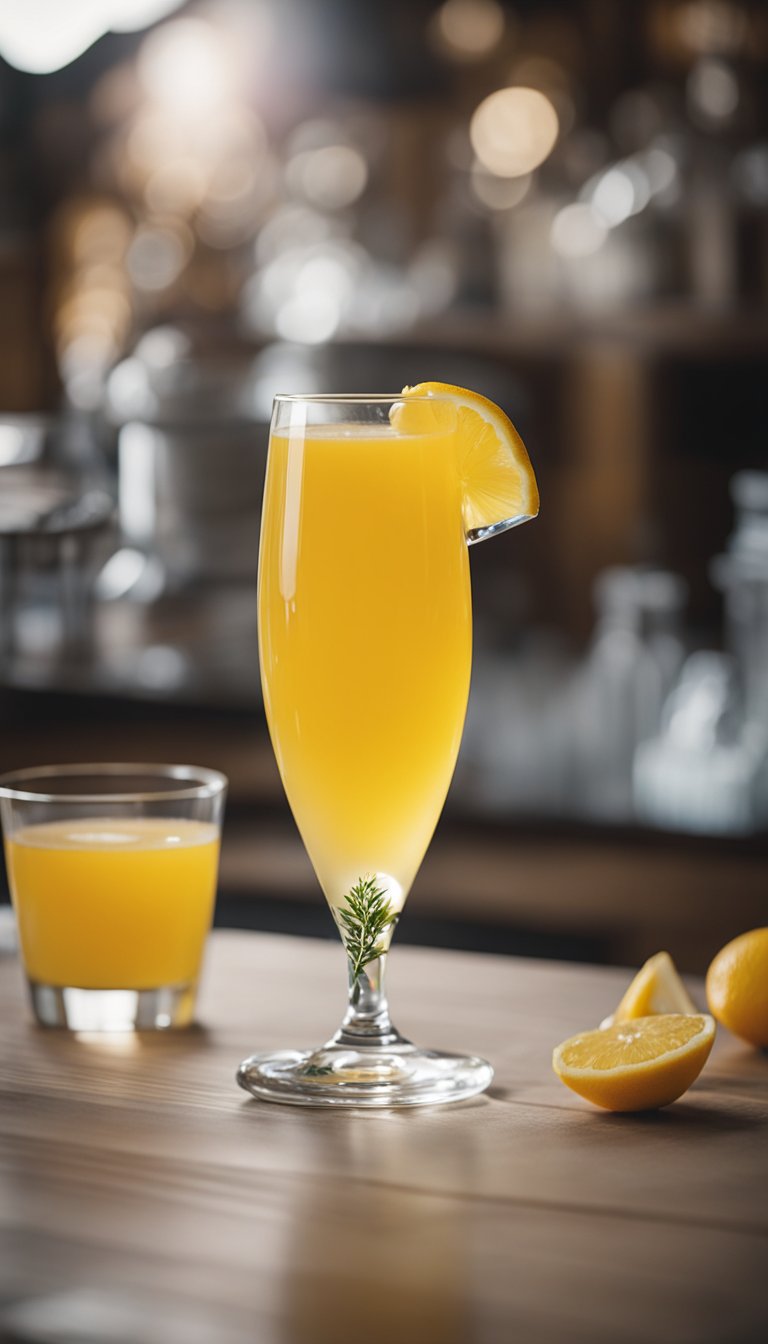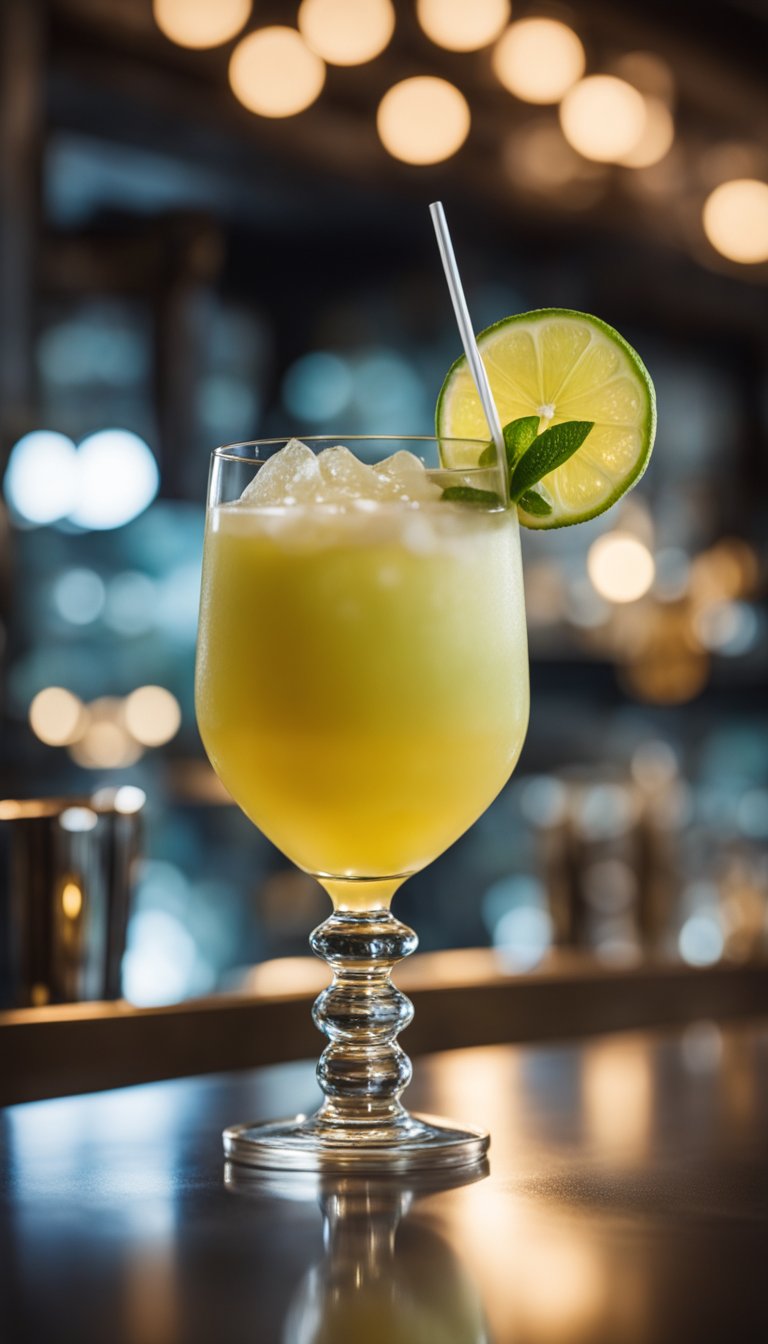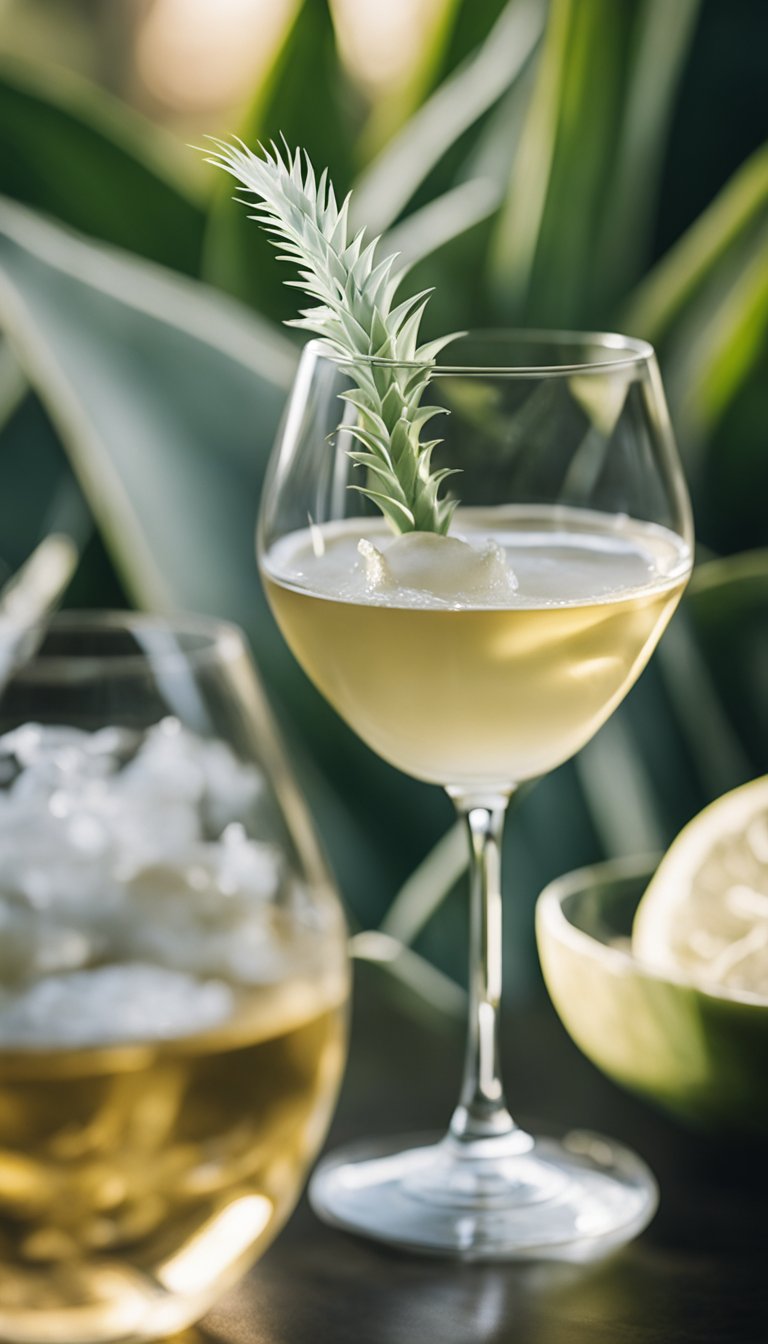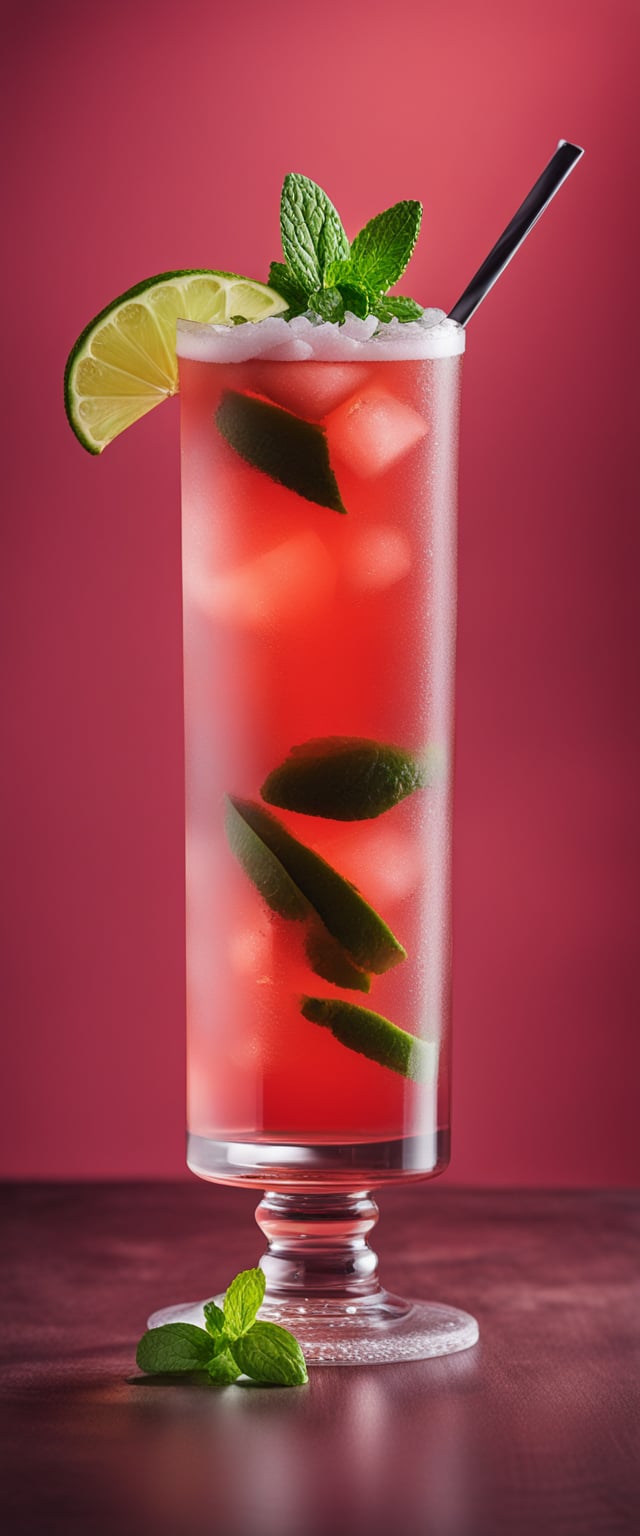The last couple of years, European Union (EU) has seen a radical change take place in the spirit industry. A shift is underwayaEUR”one which speaks to the shifting preferences, tastes, and conscious choices made by consumers. As the EU embraces sustainability and as increasing people search for alternatives to traditional alcoholic drinks and the growth of sustainable alcohol-free spirits has emerged as a fascinating trend. In this article we go on a tour to discover the fascinating developments.
The rise of Sustainable Spirits in the EU
Trends in the EU Alcohol Market
The landscape of the alcohol market in the EU is undergoing a radical transformation. Traditionally, alcoholic beverages have been a major part of European cultures, with wine beers, whiskey and vodka as the mainstays of social gatherings and dining. However, in recent years, an interesting trend has emergedaEUR”consumers are becoming more conscious of their choices.
The EU alcohol market, which was dominated by the consumption of alcoholic beverages, is now seeing a shift towards healthier, sustainable, non-alcoholic alternatives. A desire for conscious consumption, driven by health concerns, social responsibility, and environmental consciousness, has given rise to an emerging era of spiritsaEUR”the alcohol-free and sustainable kind.
The development of alcohol-free Spirits
The leaders of this movement are innovative brands who have embraced the shifting tide of consumer preferences. These companies that are forward-thinking have responded by introducing a range of alcohol-free spirits that do not only provide a healthier alternative to traditional alcoholic drinks but also prioritize sustainability.
The advent of alcohol-free spirits marks a major change from past. These spirits, without alcohol but with a plethora of flavour are a perfect representation of traditional drinks with no intoxicating effects. While the concept of alcohol-free spirits isn’t completely new, the emphasis on sustainability and green responsibility is relatively new and significant change.
This article will dive deeper into this exciting trend, looking at the environmental impacts from traditional alcohol production while also examining how sustainability practices are being integrated into the production in alcohol-free spirit. In the next section, we’ll take you through the fascinating path of these drinks, from the sourcing of ingredients to environmentally friendly production processes along with responsible packaging, distribution and packaging.
Therefore, let’s start the journey together to discover the ways in which EU sustainable alcohol-free spirits can help shape a healthier and more mindful future. In the next segment in this section, we’ll analyze the environmental impacts of traditional alcohol production and the reasons why it’s guiding consumers towards sustainable choices.
Read more: the environmental Impact from Traditional Alcohol Production
Keywords: EU responsibly sourced alcohol-free spirits alcohol market in the EU Sustainable spirits, alcohol-free alternatives with mindful consumption, environmental awareness, sustainable and alcohol-free spirits, sustainability in spirit-free alcohol, new brands that reduce the environmental impact of traditional drinking, sustainable alcohol choices.
Elevate Your Sales: Order Directly from Swedish Distillers for Premium Non-Alcoholic Spirits!
The Environmental Impact of Traditional Alcohol Production
If one thinks of alcohol production, the picture that is usually recalled is picturesque farms, farm-to-table breweries, or elegant distilleries. Even though these sights may exude nostalgia and charm however they conceal large environmental repercussions. In this section this article, we’ll go over the environmental impacts of traditional alcohol production techniques and the ways they’ve led to the increasing demand for alternatives that are sustainable.
Unseen Costs in Traditional Alcohol Production
Traditional methods of making alcohol were practiced for a long time and are often handed down over generations. The methods usually involve the cultivation of certain crops (such as grapes, grains, or sugarcane) including fermentation, distillation maturation, bottling, and distillation. While these practices might seem organic, they are actually quite complex and have huge environmental consequences:
1. Resource Intensity
a. Land Use
Traditional alcohol production typically needs huge expanses of land to be used for agriculture. Growing crops like grains or grapes require significant land resources, which could otherwise be utilized for a variety of and sustainable purposes.
b. Water Consumption
The production process of alcoholic drinks is notoriously water intensive. From irrigation of crops to actual fermentation and distillation processes, huge amounts of water are used up. This presents challenges for regions where water scarcity is an urgent problem.
2. Energy Consumption
Traditional methods of aging and distillation are highly energy intensive. Utilizing fossil fuels for powering distillery operations contributes to greenhouse gas emissions and exacerbates climate change. Additionally, the aging spirits in wooden barrels require vast storage facilities. Often, this is requiring temperature control and further energy usage.
3. Chemical Use
The use of pesticides and fertilizers is commonly used in agriculture to protect crops and increase yields. The runoff of chemical compounds from conventional farming practices can result in soil degradation and water pollution damaging ecosystems and the health of people.
A Shift Towards Sustainable Alternatives
As the concerns over climate change, resource depletion and environmental degradation continue to grow Consumers are becoming cautious. They’re seeking out products that align with their values of respect for the environment and sustainability. This shift in preferences among consumers has paved the way for more sustainable options, such as alcohol-free spirits.
In the next section where we’ll discuss ways in which the manufacturing of EU sustainable alcohol-free spirits is altering the industry’s environmental footprint. From new methods of sourcing to sustainable production processes these alternatives are setting up a new standard for sustainability within the spirit world.
Continue to read: Sustainable development in EU Alcohol-Free Spirits
Keywords: ecological impact caused by the production of alcohol conventional methods of alcohol production with high resource consumption in alcohol production, land use in the production of alcohol the consumption of water in the process of making alcohol, energy consumption during alcohol production, the use of chemicals in alcohol production alternative to sustainable production Climate change, environmental degradation, consumer preferences and sustainability of alcohol-free spirits.
Sustainable and Alcohol-Free Spirits as a Greener Alternative
In the earlier sections we looked at the environmental effects of traditional alcohol production and the shift in consumer preferences towards sustainable. We’ll now dive into the world of sustainably produced alcohol-free spirits, and explore their role in paving the way for a better and more sustainable future.
The birth of sustainable, alcohol-free Spirits
The concept of alcohol-free spirits might seem contradictory at first glance. For a fact, spirits have been for a long time associated with alcoholic content. However, creative and forward-thinking distilleries are challenging the notion by crafting alcohol-free alternatives that bring the essence of traditional spirits without alcohol.
What Are Sustainable Alcohol-Free Spirits?
The sustainable alcohol-free spirits are often referred to as “spirits alternatives,” is a drink that has the flavors, aromas, and the complexity of traditional spirits, but contain little to no alcohol. They are crafted using some combination of plants, herbs, spices, along with other natural ingredients every ingredient is carefully selected to deliver an unique sensory experience.
The Environmental Benefits
1. A reduced footprint for water and land
One of the biggest environmental advantages of sustainable alcohol-free spirits is their lower footprint on water and land. As opposed to traditional alcohol production that requires extensive land and water for crop cultivation, spirits alternatives often source their ingredients more efficiently. The result is that fewer resources are used up, which frees space and water for use in other sustainable ways.
2. Lower Energy Consumption
The production of alcohol-free spirits typically requires less energy-intensive processes as opposed to traditional distillation ageing. It results in a reduced carbon footprint as well as less emission of greenhouse gases. As the world grapples with the consequences of climate changes, these energy savings become increasingly vital.
3. A Minimal Use of Chemicals
Sustainable alcohol-free spirits are designed in a way that is focused on the purity of their products and the sustainability. This means minimal or zero chemical ingredients, pesticides or fertilizers used when making them. By avoiding the toxic chemicals frequently used in traditional agriculture, these options can contribute to healthier ecosystems as well as less polluted water sources.
In response to consumer demand
Consumers today are more informed and aware regarding their selections. They seek products that go along with their beliefs, which includes social and environmental sustainability. Sustainable alcohol-free liquors meet this demand by providing a alcohol-free, eco-friendly and stress-free drinking.
These are not only welcomed by those who choose to stay clear of alcohol but also by individuals seeking to decrease their alcohol intake, for reasons of health, social or personal reasons.
What’s on the horizon?
In the next segment in the next section, we’ll examine some noteworthy EU brands and distilleries which have turned to sustainable alcohol free spirits. The next section will take a deeper study of their unique strategies that are unique, their products, and the impact they’re making on the industry of spirits.
Keep reading It is leading the Green Revolution: EU Sustainable Brands that are Alcohol-Free
Keywords: Spirits that are sustainable and alcohol free Alternative spirits, environmental benefits, reduced land as well as water footprint, lesser energy use, no chemical usage, meeting the needs of consumers, EU brands, distilleries cutting-edge approaches, driving on the path to a greener future.
Leading this way is the Green Revolution: EU Sustainable Brands that are Alcohol-Free
As the preferences of consumers continue to shift towards sustainable and environmentally responsible several European Union (EU) distilleries and brands are leading the way in the production of alcohol-free sustainable spirits. In this article we will examine some notable EU brands and distilleries which have been embracing the green revolution and are becoming a major force in the spirit industry.
The Rise of EU Sustainable Alcohol-Free Spirits Brands
A Commitment to Sustainability
EU distilleries as well as brands enjoy a long tradition of producing premium spirits. In the current climate, where the world faces environmental challenges These companies are moving towards an entirely new goal: sustainability. They recognize the need to reduce their carbon footprint and conserve natural resources and encourage responsible consumption.
Innovative Approaches
In an effort to be sustainable, EU brands are employing innovative approaches to alcohol-free spirit production. They are using locally and organic ingredients, adopting energy-efficient production methods and even adopting circular economic principles.
Relevant EU Sustainable Drink-free Spirits and Brands
1. Seedlip
-
Introduction: Seedlip has been considered to be one of the pioneers of the sustainable alcohol free spirits movement. In the United Kingdom, the brand has gained international recognition for its inventive spirit options.
-
Sustainable Initiatives Seedlip put a large emphasis on sustainability, procuring ingredients from farms in the area and using environmentally-friendly packaging. Seedlip has also started initiatives to support biodiversity and conservation.
2. Rutte
-
Background: Rutte A Dutch distillery with a long story that goes back to 1872. The distillery has recently introduced a variety of alcohol-free spirit that respect their traditional craftsmanship as well as embracing the concept of sustainability.
-
Sustainability-related Initiatives Rutte emphasizes using natural ingredients and reducing consumption in their processes of production. They also participate in green initiatives within their local area.
3. CalenIfo
-
Background CalenIfo Originating from Spain is famous for its vibrant and tropical-inspired spirit, that is alcohol free and ideal for cocktails and social gatherings.
-
Sustainability Strategies: CalenIfo are committed for ethically sourcing its ingredients and promoting ethical labor practices as well as reducing the environmental impact of their products.
Impact on the Spirits Industry
These EU sustainable brands of alcohol-free spirits are not only offering eco-friendly alternatives to traditional spirits, but are also inspiring change within the industry. As they gain recognition, other distilleries and brands are starting to notice and are embracing more sustainable practices.
The growth of these brands highlights an increasing awareness for the environment and a demand for sustainable and responsible consumption within the market. It’s clear that sustainability is no longer just a trend. It’s becoming a vital aspect of the spirits industry’s future.
In the following section we’ll take a closer take a look at the impact of sustainable alcohol-free spirits as well as their role on the scene of future beverage trends.
Keep reading The Future is Shaping: Global Impact of sustainable alcohol-free Spirits
Keywords: EU safe alcohol-free and sustainable spirits dedication to sustainability, creative approaches, Seedlip, Rutte, CalenIfo’s effect on the spirits industry, responsible consumption, future of the industry of beverages.
Affirming Futures: Global Effects of Sustainable Alcohol-Free Spirits
In the preceding parts of this series, we embarked on an adventure to discover the dynamic world of sustainable alcohol-free spirits within the European Union (EU). In the previous sections, we explored the EU’s dedication to sustainability, new approaches as well as notable EU brands driving the green revolution. In this last part, we broaden our eyes to explore the global impact on alcohol-free spirit made from sustainable sources and their role in shaping our future in the world of beverages.
A Worldwide Shift Towards Sustainability
A Global Phenomenon
Although the EU has been a pioneer in sustainability in the production of alcohol-free spirits, the trend is by not limited to its territorial boundaries. From North America to Asia, distilleries and brands are beginning to recognize the importance of environmental responsibility and sustainability in spirits production.
Consumer Demand
One of the main reasons driving this shift in global trends is the rising demand from consumers to purchase sustainable and environmentally friendly products. Today’s consumers are not only looking for quality beverages, but also sustainability. They want to make choices that align with their values while reducing their environmental footprint.
Exploring Horizons Brands Beyond Borders
Beyond the EU
As we’ve seen in earlier sections in this article, the EU has several well-known firms that support sustainability. But, we shouldn’t ignore the work of distilleries from different regions. Brands from Australia, the United States, Canada, Australia as well as a number of Asian countries are also making ripples in the sustainable alcohol-free spirits industry.
Unique Techniques and Flavors
What sets these global companies apart is their distinctive regional flavors and production techniques. For example, American brands may draw ideas from local herbs, while Asian distilleries tend to infuse their products with traditional herbs and spices.
The impact has on Spirits Industry
The combined efforts of distilleries worldwide and brands have a significant impact upon the spirits industry. Here’s how:
Inspirational Change
The popularity and acceptance for sustainable alcohol-free spirit brands have prompted traditional distilleries and beverage companies, to rethink their practices. In the process, we see a rise in the number of leaders in the industry adopting eco-friendly and sustainable production methods.
A Sustainable Future
Sustainability no longer just a concept, but a core strategy for the industry’s long-term. From decreasing carbon emissions to conserving the resources of water spirits producers are accepting their responsibility as stewards of the environment.
Conclusion: A Toast to Sustainability
In this series we’ve taken a deeper look at the world of sustainably produced alcohol-free spirits from their humble beginnings as well as innovative production methods that have led through to prominent EU and global brands. This journey has shown the power of sustainability to transform in the world of spirits.
We raise our glasses and toast these impressive advancements We acknowledge that the new green spirit revolution isn’t just a passing trend, it’s an entire paradigm change. It’s a step towards a more sustainable, responsible, and eco-friendly future for our favorite beverages.
So, whether you’re sipping on a Seedlip cocktails in London while sipping a Rutte cocktail in Amsterdam, or tasting the exotic tastes that CalenIfo offers in Madrid Remember that every choices contribute to a more green more sustainable, healthier world.
Thank you for joining us on this fascinating journey into the world of sustainably produced alcohol-free spirits. As we conclude this series take the idea of sustainability forward and make informed choices when it comes to the drinks we consume.
Recap of the Series:
-
The Rise of EU Sustainable Alcohol-Free Spirits Brands
-
Sustainable, Alcohol-Free Spirits: The Global View
-
New Production Strategies in Sustainable Alcohol-Free Spirits
-
Notable Brands within the Sustainability Alcohol Free Spirits Movement
-
Shaping the Future: The Global Impact of sustainable alcohol-free Spirits





